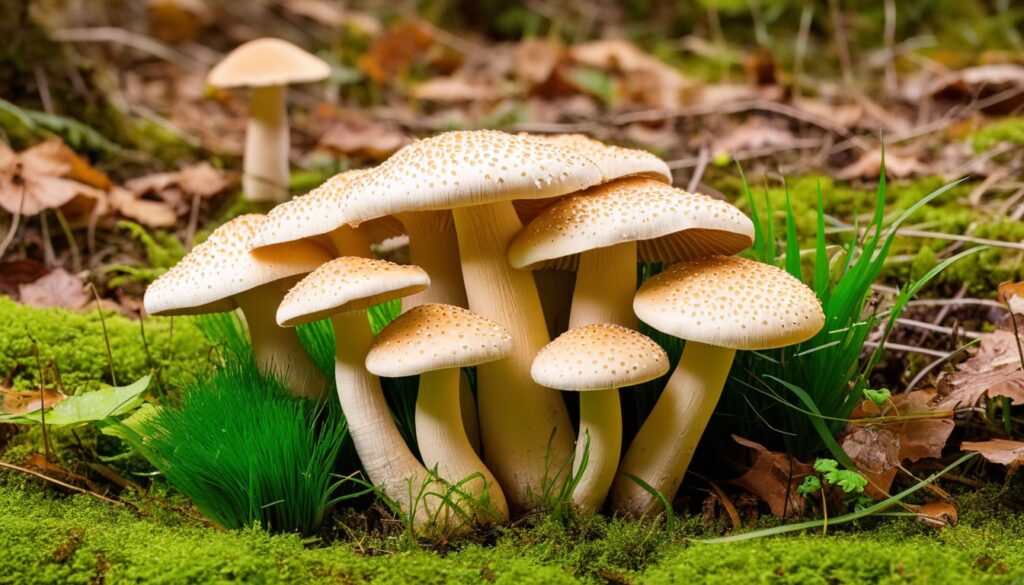If you’re looking to cultivate your own mushrooms at home, then using grow bags is an excellent option. In this beginner’s guide, we’ll provide you with detailed instructions to help you grow your own delicious fungi using grow bags. Whether you’re a seasoned gardener or new to mushroom cultivation, these step-by-step instructions will guide you through the process.
Key Takeaways
- Growing mushrooms using grow bags is an accessible and rewarding endeavor for beginners and seasoned gardeners alike.
- Proper preparation of grow bags is essential for creating a favorable environment for mushroom growth.
- The ideal growing conditions for mushrooms include specific temperature, humidity, lighting, and air circulation requirements.
- Once your mushrooms start to grow, they require proper care to reach their full potential.
- Challenges may arise during mushroom cultivation, but the troubleshooting techniques in this guide can help you overcome them.
Understanding Grow Bag Mushrooms
Growing mushrooms using grow bags is an exciting and rewarding form of mushroom cultivation. Whether you’re a beginner or an experienced gardener, it’s essential to understand the basics of this process before getting started.
In this section, we’ll explore the benefits of using grow bags for mushroom cultivation, discuss the types of mushrooms that are ideal for growing in them, and explain the optimal growing conditions.
The Advantages of Grow Bag Mushrooms
Growing mushrooms in grow bags offers many advantages over traditional methods. For starters, it eliminates the need for a dedicated growing space. Grow bags can be set up and maintained indoors or outdoors, making cultivation possible in a variety of settings.
Grow bags are also very easy to use. They require minimal preparation and can be easily moved around if needed. Plus, they’re affordable and can be reused for several growing cycles, making them an eco-friendly choice.
The Best Mushroom Varieties for Grow Bags
Not all mushroom varieties are suitable for growing in grow bags. However, there are plenty of options that thrive in this environment.
|
Mushroom Variety |
Description |
|---|---|
|
Oyster |
A popular choice for grow bags due to its ease of cultivation and delicious taste. Comes in various colors. |
|
Shiitake |
A flavorful and versatile mushroom that requires slightly cooler temperatures and higher humidity than some others. |
|
Lion’s Mane |
A unique-looking and tasty mushroom with a texture similar to shellfish. Requires slightly lower temperatures and high humidity. |
|
Button |
The classic mushroom often used in cooking. Requires slightly higher temperatures and lower humidity than other varieties. |
These are just a few examples of the mushroom varieties that can be grown in grow bags. Whichever variety you choose, make sure to research its specific growing requirements to ensure success.
The Ideal Growing Conditions
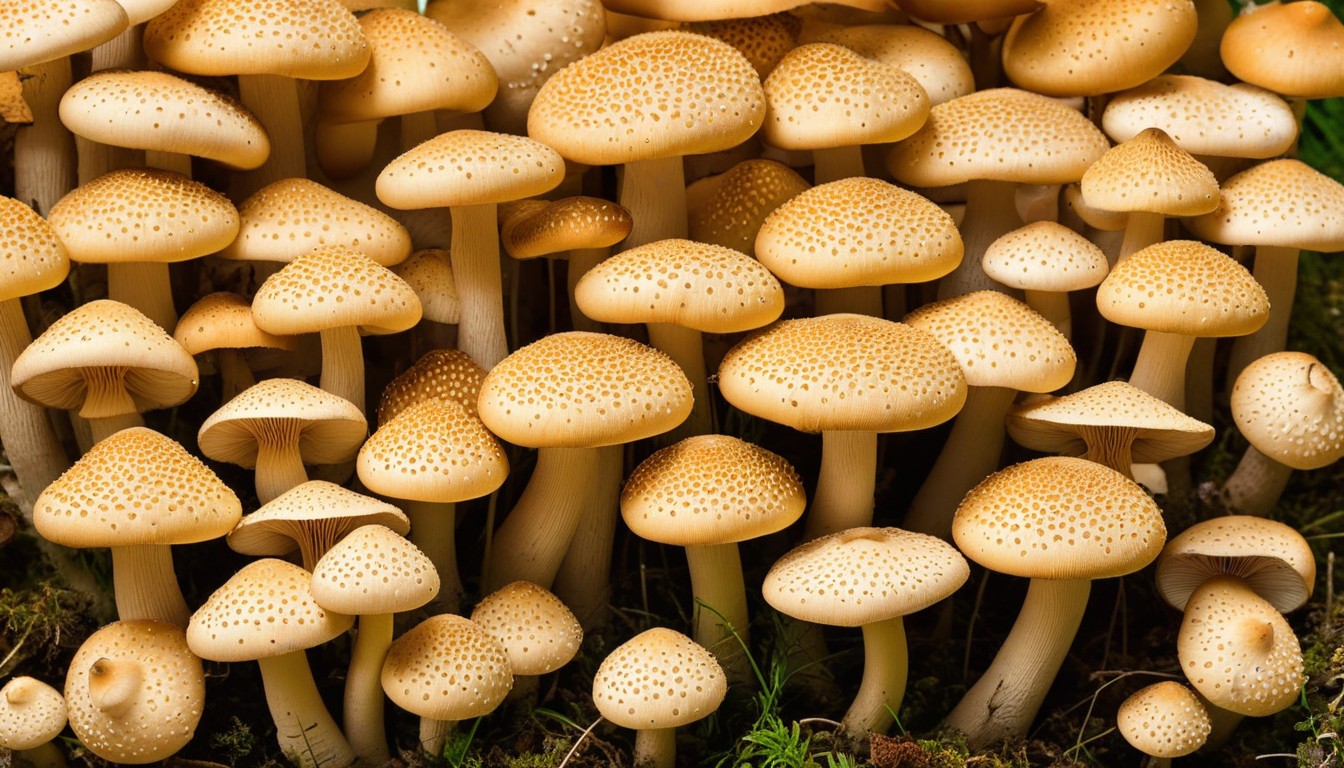
Creating the ideal growing conditions is the key to a successful mushroom harvest. In general, mushrooms prefer a warm and humid environment with plenty of fresh air circulation.
The ideal temperature for most mushrooms is between 65-75°F (18-24°C). Humidity levels should be kept between 80-95%, depending on the variety of mushroom being grown.
To maintain proper humidity levels, mist the inside of the grow bags daily with a spray bottle. Fresh air exchange is also very important for mushroom growth, so make sure to open the bags to allow for airflow.
With the right variety of mushroom, carefully crafted conditions, and a little patience, you’ll be enjoying a bountiful mushroom harvest in no time.
Choosing the Right Grow Bag
Choosing the right grow bags is essential for successful mushroom cultivation. There are various options available in the market, so picking the right one may seem daunting at first. However, by keeping some important factors in mind, you can make an informed decision.
Types of Grow Bags
Grow bags are usually made of either plastic or fabric material. Plastic bags are more durable and are a great choice if you plan on reusing them. They are also easier to clean and sanitize. However, they do not offer good air circulation, which can be a problem for mushroom growth.
Fabric bags, on the other hand, offer better air circulation, allowing for better mushroom growth. They are usually made of materials like burlap or polyester. They are more affordable than plastic bags and can be composted after use.
Size of the Bags
The size of the grow bag will depend on the mushroom variety you have chosen. Different types of mushrooms have varying space requirements and grow at different rates. Some mushrooms require more room to grow while others can be cultivated in smaller bags.
It’s advisable to purchase bags slightly larger than the size you think you’ll need, as mushrooms can grow quickly and can outgrow their bags. You can always fold down the extra material if the bag is too big.
Other Considerations
When choosing grow bags, it’s important to also consider the quality of the materials used, especially in terms of durability and strength. It’s also a good idea to buy from reputable suppliers to ensure that the bags are of high quality, making them suitable for mushroom cultivation.
Lastly, consider the price range. Different types of grow bags come at varying prices. Cheaper bags might seem like a good deal, but they can be made of subpar materials that can harm your mushrooms’ growth. Consider investing in high-quality bags that will last multiple uses.
Preparing the Grow Bags
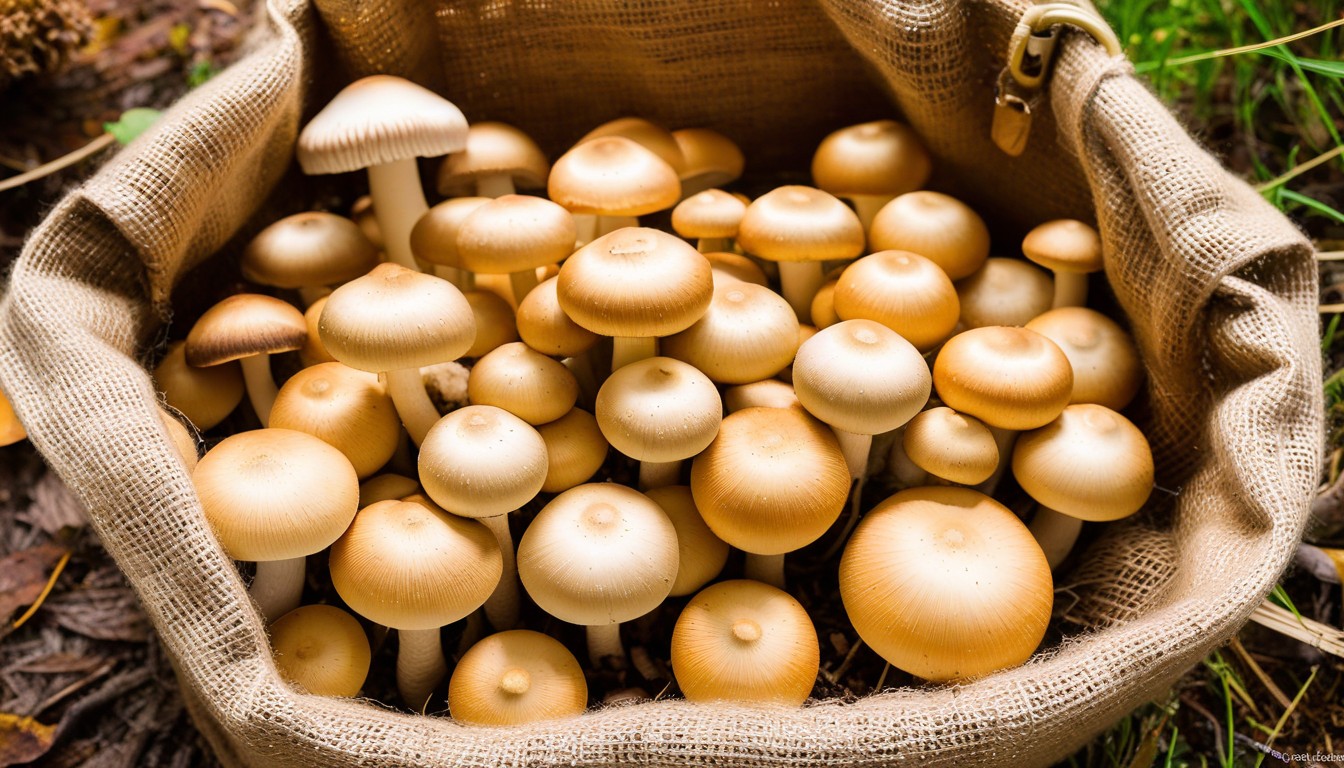
Proper preparation of grow bags is essential for creating a favorable environment for mushroom growth. Here’s a step-by-step guide to help you prepare your grow bags:
- First, sterilize the grow bags by placing them in boiling water for at least 30 minutes. This process kills any contaminants that can interfere with mushroom growth.
- Next, allow the bags to cool completely before adding the growing medium to prevent damage to the plastic.
- Fill the grow bags with the appropriate mushroom growing medium, leaving some space at the top to allow for the expansion of the substrate as the mushroom mycelium colonizes it.
- After filling the bags, fold the tops over a few times to create an opening large enough to insert the mushroom spawn.
- Secure the opening with a metal clamp or binder clip to seal the bag.
- Using a sterilized needle or scalpel, create ventilation holes in the grow bag. These holes will allow fresh air to enter and carbon dioxide to escape, facilitating mushroom growth.
With your grow bags well-prepared, you’re ready to move on to the next stage of the mushroom cultivation process!
Choosing the Mushroom Variety
Not all mushrooms are suitable for grow bag cultivation. When choosing the variety, consider your preferences and the conditions in which you’ll be growing them. Here are some popular mushrooms that thrive in grow bags:
|
Mushroom Variety |
Description |
|---|---|
|
Oyster |
A favorite among home growers, oyster mushrooms come in different colors and are easy to cultivate. They prefer cooler temperatures and high humidity, making them ideal for indoor growing. |
|
Shiitake |
Shiitake mushrooms are known for their meaty texture and rich flavor. They require a bit more attention than oyster mushrooms, but are still relatively easy to grow. They prefer warmer temperatures and lower humidity. |
|
Lion’s Mane |
This mushroom has a unique appearance with its cascading, white tendrils. It has a delicate flavor and texture and is prized for its potential health benefits. Lion’s mane mushrooms prefer cooler temperatures and high humidity. |
When choosing a mushroom variety, also consider its growth rate and yield. Some varieties grow faster and produce more mushrooms than others. Ultimately, the choice is up to you and your personal preferences.
Inoculating the Grow Bags
Now that you have prepared the growing medium, it’s time to inoculate the grow bags with mushroom spawn. The spawn serves as the “seed” for the mushrooms to grow.
There are various methods to inoculate your grow bags with spawn, including:
- Using liquid spawn: This is a quick and easy way to inoculate your bags. Simply inject the liquid spawn into the growing medium through a small hole made in the bag.
- Using grain spawn: Grain spawn is mycelium (a vegetative part of the fungus) grown on sterilized grains. This method involves placing a handful of grain spawn into each grow bag and mixing it into the growing medium.
- Using sawdust spawn: Sawdust spawn is mycelium grown on sawdust. This method involves layering the sawdust spawn and growing medium in the grow bag and mixing them together.
Whichever method you use, make sure to maintain sterile conditions to avoid contamination. Clean your work area thoroughly, wear gloves and a mask, and sanitize any tools used during the process.
After inoculating, seal the grow bags and store them in a dark, warm place until the mycelium fully colonizes the growing medium, usually within 2-4 weeks. Once the mushrooms start to grow, move the bags to a cooler, well-lit area.
Maintaining the Ideal Growing Conditions
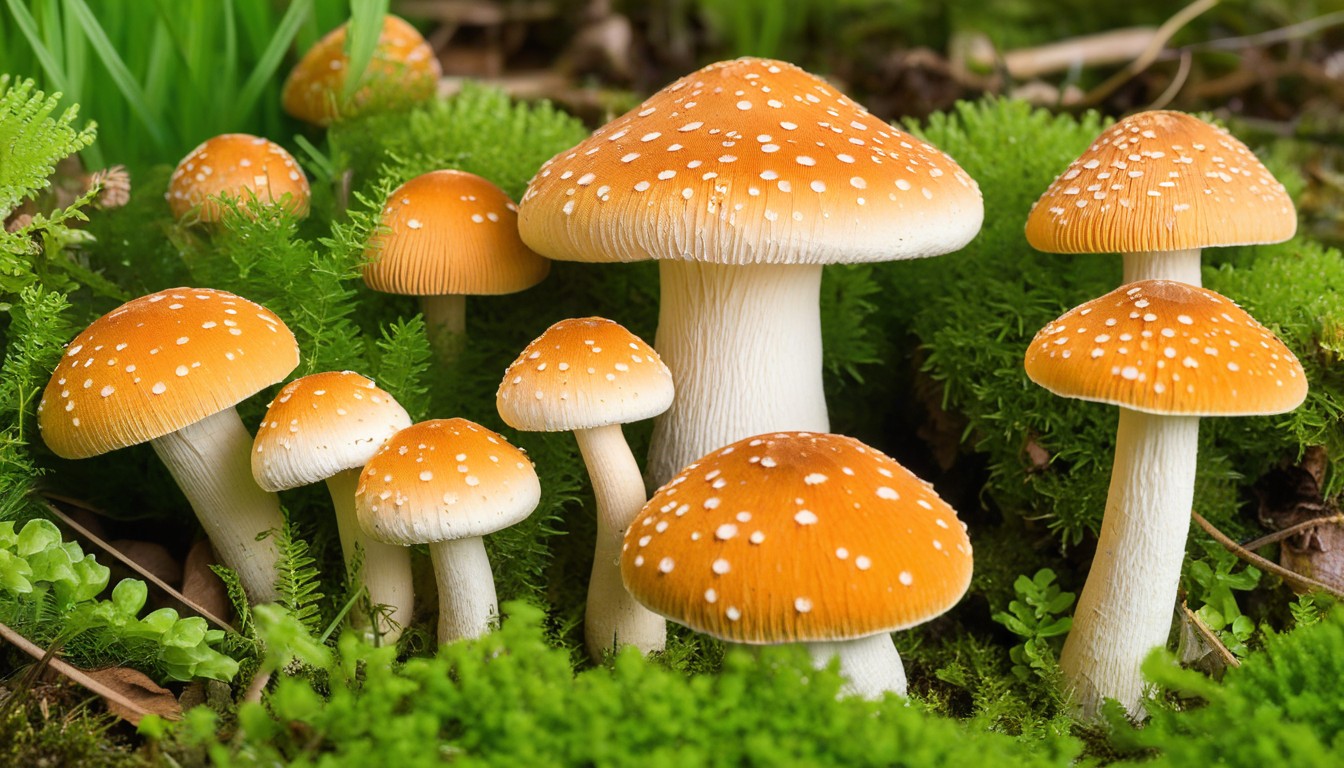
Providing proper growing conditions is crucial for healthy mushroom development. Here are the key factors to consider:
|
Factor |
Ideal Conditions |
|---|---|
|
Temperature |
Between 60-75°F (15-24°C) for most mushroom varieties |
|
Humidity |
85-95% humidity is recommended for most mushrooms. This can be achieved by misting the grow bags daily or using a humidifier. |
|
Lighting |
Mushrooms do not need sunlight, but some varieties benefit from indirect light. |
|
Air Circulation |
Airflow is important for preventing mold and ensuring proper gas exchange. Open the grow bag slightly or use a fan to create gentle air movement. |
Keep in mind that the ideal growing conditions may vary depending on the mushroom variety you’re cultivating, so research the specific requirements for your chosen mushroom.
With the proper growing conditions in place, your mushrooms should thrive and be ready for harvest in no time.
Caring for Your Growing Mushrooms
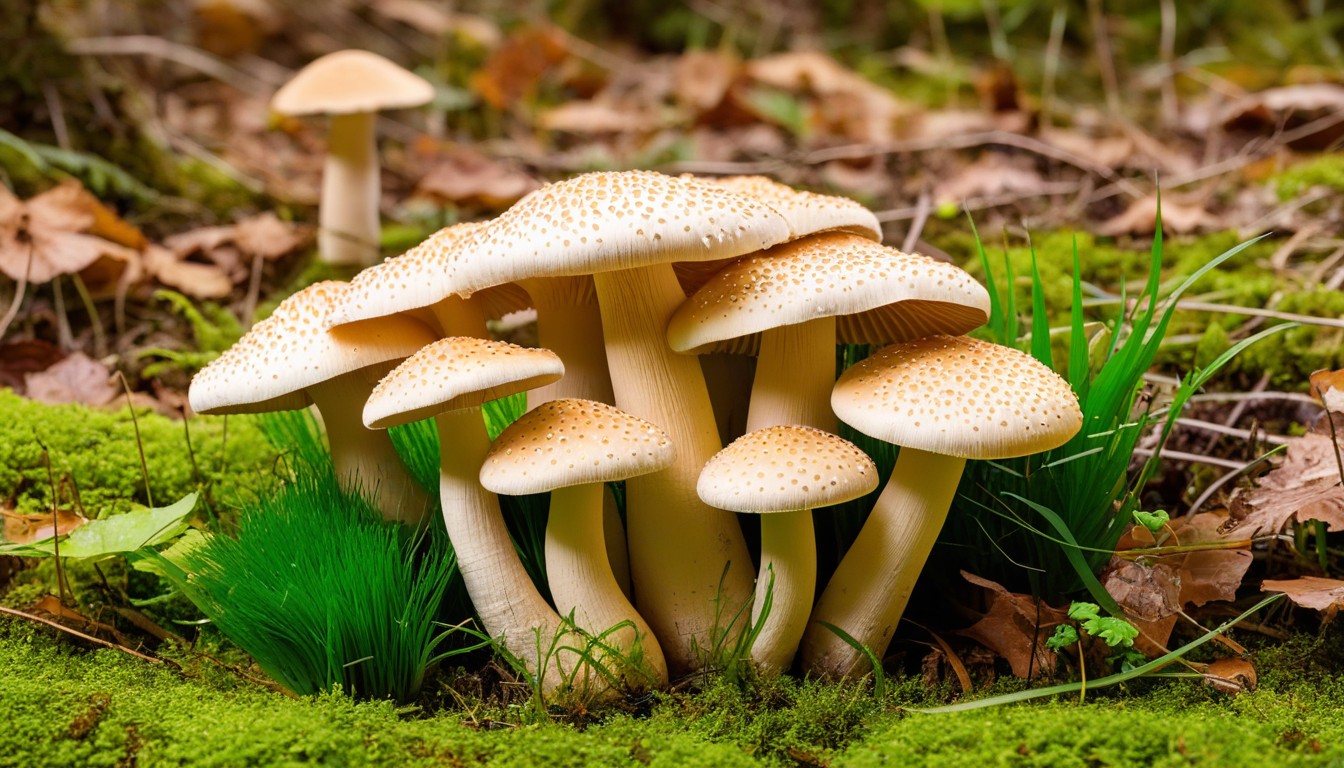
Once your mushrooms have started to grow, it’s important to provide them with proper care to ensure they reach their full potential. Here are some essential tasks for mushroom maintenance:
- Watering: Keep the growing medium moist, but not too wet, to avoid mold and bacteria growth. Use a spray bottle to mist the surface regularly or water gently with a watering can. Avoid getting the mushrooms wet to prevent damage to their fragile caps.
- Humidity: Mushrooms require a high level of humidity to grow. Use a mister or humidifier to maintain a relative humidity of 90-95% in the growing area.
- Air circulation: Good air circulation is essential for healthy mushroom development and to prevent stale air. Use a small fan or ventilation system to promote fresh air exchange.
- Temperature: Maintain a temperature range of 65-75°F for optimal mushroom growth. Use a thermometer to monitor the temperature and adjust accordingly.
- Pest control: Watch out for pests such as mites, flies, and slugs, which can damage or destroy your mushrooms. Use organic pest control methods or remove them by hand.
By providing proper care, you can expect a bountiful harvest of delicious and nutritious mushrooms. Happy growing!
Mushroom Harvesting: Tips for Determining Mushroom Maturity
Harvesting your mushrooms at the right time is crucial for their taste and texture. But how do you know when they’re ready to be picked? Here are some tips for determining mushroom maturity:
- Observe the cap: As the mushroom matures, its cap will expand and flatten out. Once it reaches its maximum size and starts to turn upwards, it’s time to harvest.
- Check the veil: Look at the underside of the mushroom’s cap, where a thin membrane called the veil connects it to the stem. When the mushroom is mature, the veil will break away from the cap and reveal the gills.
- Inspect the gills: Mature mushrooms will have fully-developed gills that are fully coloured. If they’re still light in color or tightly packed together, the mushroom isn’t yet mature.
- Feel the stem: As the mushroom matures, the stem will become sturdier. Give it a gentle tug; if it comes away easily from the casing, it’s time to harvest.
Remember, mushrooms can mature quickly, so it’s best to check on them daily once they start to grow. Happy harvesting!
Mushroom Cultivation Problems: Troubleshooting Grow Bag Issues
While growing mushrooms using grow bags is an accessible and rewarding experience, it is not without its challenges. Here are some common mushroom cultivation problems you may encounter and how to troubleshoot them:
Problem: Mold Growth
Mold can be a common issue in mushroom cultivation, and it typically indicates excess moisture and a lack of air circulation. To prevent mold growth, ensure proper ventilation and reduce watering if necessary. You can also remove small mold patches by cutting out the affected area and applying hydrogen peroxide to the remaining fungus.
Problem: Pests
Unwanted pests can wreak havoc on mushroom growth. To prevent pest infestations, make sure you’re handling inoculation and bag preparation in a sterile environment. Pests can also enter through ventilation holes, so ensure they are adequately covered. If you notice pests, remove infected bags immediately to prevent the spread.
Problem: Slow Growth
If your mushrooms are growing too slowly, it may be due to inadequate ventilation or low humidity levels. You can resolve this issue by increasing airflow and spraying the bags with water to raise humidity.
Problem: Subpar Mushroom Development
Undersized or misshapen mushrooms can be the result of incorrect growing conditions or poor-quality spawn. Be sure to maintain optimal growing conditions throughout the growth cycle. While cheaper spawn may be tempting, investing in high-quality spawn from a reputable supplier is the best way to ensure successful mushroom growth.
By following these tips and troubleshooting solutions, you’ll be well-equipped to handle any mushroom cultivation problems and enjoy a bountiful harvest!
Conclusion
In conclusion, we hope this beginner’s guide to growing mushrooms using grow bags has been informative and helpful. Remember, mushroom cultivation is an enjoyable and rewarding hobby that requires patience and dedication. With the right materials, adequate preparation, and proper care, you can grow your own delicious mushrooms in the comfort of your home. So, why not give it a try and embark on a new adventure? Happy growing!
FAQ
What are the benefits of using grow bags for mushroom cultivation?
Grow bags provide a controlled environment for mushroom growth, ensuring optimal conditions for successful cultivation. They are portable, reusable, and allow for easy monitoring of moisture levels.
Which types of mushrooms can be grown in grow bags?
Various mushroom species can be cultivated in grow bags, including but not limited to oyster mushrooms, shiitake mushrooms, and white button mushrooms.
What are the ideal growing conditions for mushrooms in grow bags?
Mushrooms thrive in temperatures between 55-75°F (13-24°C), with humidity levels around 70-90%. They prefer indirect light and require proper air circulation.
How do I choose the right grow bags for mushroom cultivation?
Consider the size of the mushrooms you intend to grow and the material of the grow bags (typically polyethylene). Choose bags that are sturdy and have good breathability.
How should I prepare the grow bags before using them?
Start by sterilizing the grow bags to eliminate any potential contaminants. Then, fill them with a suitable growing medium, such as a mixture of organic materials like straw and sawdust.
What mushroom varieties are recommended for grow bag cultivation?
Popular mushroom varieties for grow bag cultivation include oyster mushrooms, shiitake mushrooms, lion’s mane mushrooms, and king oyster mushrooms. These varieties are known for their adaptability and high yield.
How do I inoculate the grow bags with mushroom spawn?
Inoculation involves introducing the mushroom spawn to the grow bags to initiate the growth process. There are different methods, such as mixing the spawn with the growing medium or inserting sterile plugs into the bags.
How do I maintain the ideal growing conditions for my mushrooms?
Maintain a consistent temperature and humidity level in the growing area. Provide indirect light and ensure proper air circulation by periodically fanning the grow bags. Monitor and adjust the conditions as needed.
What care tasks are important for the healthy development of mushrooms?
Regularly mist the grow bags to maintain adequate moisture levels. Protect the mushrooms from pests by keeping the growing area clean and applying organic pest control methods if necessary.
How do I know when my mushrooms are ready to be harvested?
Mushrooms are ready to be harvested when their caps have fully opened or as recommended for the specific variety. Use a sharp knife or scissors to cut the mushrooms at the base of the stem.
What should I do if I encounter issues during mushroom cultivation in grow bags?
If you face problems like mold growth, pests, or stunted mushroom growth, identify the cause and implement appropriate solutions. Consult cultivation resources or seek advice from experienced growers if needed.
Is growing mushrooms using grow bags suitable for beginners?
Yes, growing mushrooms using grow bags is beginner-friendly due to the controlled environment and relatively simple cultivation process. Follow the step-by-step instructions and enjoy the rewarding experience of growing your own mushrooms.

